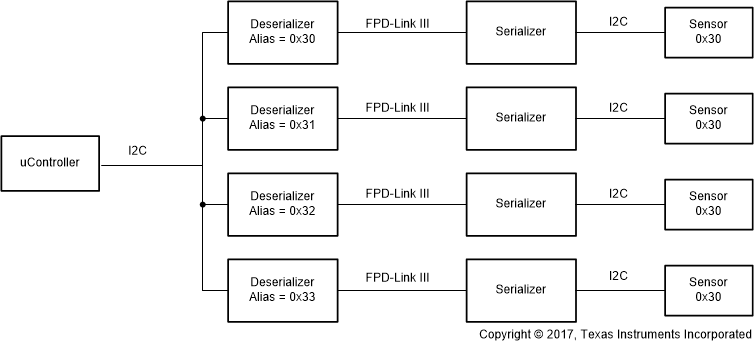SPRUII1A November 2017 – January 2020
-
Fusion Application Board
- Trademarks
- 1 Introduction
- 2 Overview
- 3 Hardware
- 4 Image Sensor Module (Optional)
- 5 Getting Started
- Revision History
3.5.1 Multiple Device Addressing (Aliasing)
Sensor fusion architectures, as for ADAS and self-driving applications, require multiple sensor modules in a single system. It is desirable for the sensors to be built alike, and therefore be fixed to the same physical I2C address. If these modules are all to be accessed on the same I2C bus, there must be a method of assigning each camera an alias that is used to address them. The FPD-Link parts provide the functionality to assign a slave ID (alias) to each camera. This allows the slave devices to be independently addressed. These physical slave addresses and their associated alias IDs are configured by programming the Slave ID and Slave Alias registers on the deserializer (DS90UB960-Q1).
The host microprocessor can now communicate with each imager by using its alias, even though the imagers in each camera are physically addressed identically. From the I2C host perspective, this will remap the address of each slave to its slave alias. For the Fusion board, multiple instances of the same sensor modules can be used.
Figure 5 shows how aliasing is performed even though all of the sensor modules are identical.
 Figure 5. Diagram of Aliasing Through Using the Deserializer
Figure 5. Diagram of Aliasing Through Using the Deserializer